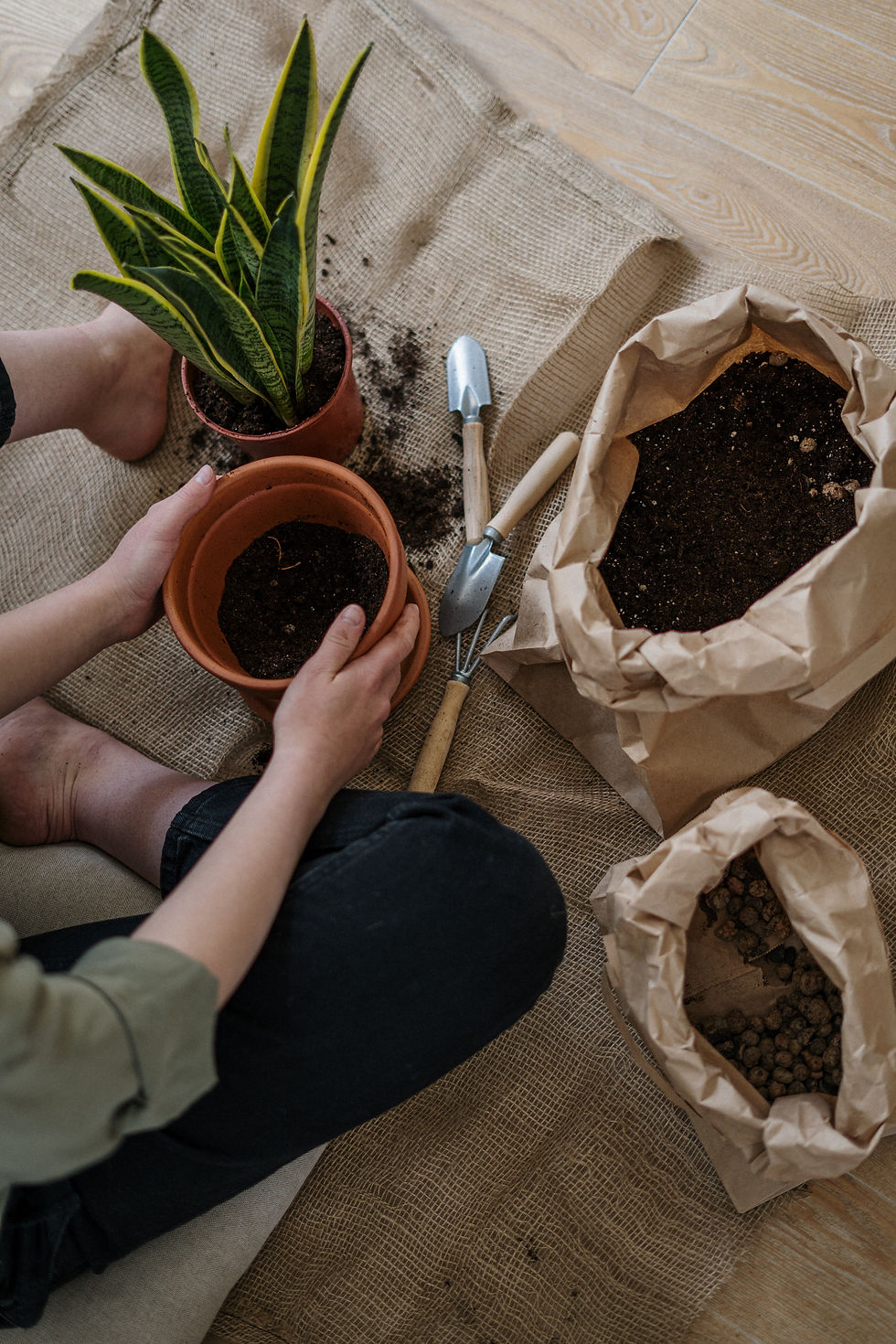When to Water Your Plant - 6 Factors to Consider
- Thorsen's Greenhouse

- Aug 24, 2022
- 3 min read
Water is essential to plant growth but determining when and how much to water your houseplant can be the bane of every plant parent. There is no one-size-fits-all when it comes to watering your plants. Every plant is unique and has it's own unique needs. Use these 6 factors to help determine when and how much to water your plant!

1. Your Plant Species
The first thing to determine is how much water your plant species needs in general. Is it a desert species which prefers dry soil, or a tropical variety which likes damp soil? Do some research on the plant species to get a feel for how dry or wet it likes it's soil. Use this information to set a baseline for how much you let the soil dry between watering.
2. Soil Material
Next, identify what soil your plant is being grown in. Some types of soil are great at holding water while others are good for quick drainage. For example, a soil with chunky pieces of mulch or perlite is going to drain water faster than a soil made of sphagnum or peat moss, which will maintain moisture. Use the information you found in the first step to determine the type of soil your plant would do best in - whether it wants to dry out quickly or stay damp for longer!
3. Time of Year
Seasonality will also affect your plant's growth and water needs. Most indoor houseplants enter a period of dormancy in the cooler months of the year (fall and winter) while the warmer months (spring and summer) lead to a spurt of growth. The more your plant is growing, the more water it is using. Providing your plant will adequate water during the growing time is going to be essential for large, healthy growth. In contrast, avoid excess watering in the dormant period as this can quickly lead to overwatering and issues like leaf loss or root rot. You should expect to adjust your watering schedule as the seasons change.
4. Pot Size and Material
Make sure your plant is potted in the right size pot, as this will have a big impact on how much and often you need to water your plant! A small plant in a large pot can quickly lead to root rot, as the excess soil soaks up water and dries slowly. On the other hand, a large plant in a small pot will lead to an increase in watering, as there is no extra soil to maintain moisture for the plant. Find the perfect balance for your plant by choosing a pot that is only 2-3 inches larger than your plant's root ball!
You should also take the pot's material into consideration. Different materials will affect the soil moisture in different ways. Terra Cotta pots draw moisture out of the soil, while ceramic and plastic pots will keep the soil moist for longer.
5. Environmental Factors - air, humidity, light, temperature
One of the most important factors when it comes to watering your plant is the environmental conditions! This includes the light level, temperature, humidity, and air flow. A plant that sits in bright sunlight during the day typically dries out faster than the same plant being grown in a shaded area, due to an increase in growth. Higher temperatures also promote increased growth, which in turn results in higher water needs. When it comes to humidity, high humidity will tend to keep the soil damper for longer, while dry air will suck the moisture out of the pot. In addition, a vent or fan close to a plant will increase drying, resulting in the plant needing more water. Evaluate these environmental factors and use them to predict how fast your plant will dry out.
6. Observe Your Plant
The last step to determine when your plant needs water, is to simply observe your plant. Be on the lookout for drooping or curling leaves, faded colors, and browning tips as these can all be signs that your plant needs water. Keep track of how many days it takes after watering for your plant to exhibit these signs, and use this to determine your watering schedule!
Combine these 6 factors and you will become a houseplant watering pro!

Like this blog post? Find similar content using the tags below.





Comments